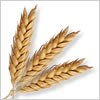Your cart

 UK: Tighter than average barley supply balance forecast for 2024/25
UK: Tighter than average barley supply balance forecast for 2024/25
The Agricultural and Horticultural Development Board (AHDB) has just published its second UK cereals supply and demand estimates for 2024/2025, Agriland reported on February 2.
The figures confirm a number of distinct trends. These reflect the challenging 2023/2024 growing season and the diminished quality of grains produced in specific sectors.
Overall, minimal adjustments were made to availability and consumption figures since the last supply and demand release in November 2024.
However, the release included a first look at wheat and barley exports this season, and a revision for the oat export forecast.
Across all three major UK grown cereals in 2024/2025 exports are forecast well below usual levels.
The reduced availability of wheat in the 2024/2025 season outweighs reduced domestic consumption. However, steady exports leave ending stocks well above the five-year average.
For barley, a slight climb in availability is outweighed by increased domestic consumption, leading to a tighter than average balance this season. However, reduced exports leave heavier ending stocks.
This season, due to increased usage in both the human and industrial and animal feed sectors, maize imports are expected to be well above average.
Despite heavier oat supplies, increased consumption leaves a tighter oat balance this season compared to last. However, minimal exports have led to heavier than average stocks.
Total cereals demand for animal feed in 2024/2025 is estimated at 12.610Mt, relatively unchanged from November’s estimate (-22Kt) but 303Kt down on the season.
The balance between supply and demand sets the overall tone of the domestic market, according to the AHDB.
It publishes forecasts of cereal supply and demand for the UK split into the areas of availability, consumption, exports and stocks.
Compound animal feed production is expected to continue to rise again this season – following a considerable decline in 2022/2023 – driven largely by a rise in cattle feed production and to a smaller extent, sheep feed, outweighing falls in pig and total poultry feed demand.
Cereal inclusions remain firm, which is also driving the rise in usage in compound feed production.
However, the amount of cereals fed on farm is expected to decline this season, due to smaller domestic crops, leading to the overall annual decline in cereals demand for animal feed.
At 10.684Mt, human and industrial (H&I) total cereals usage in 2024/2025 is again relatively unchanged from the previous estimates (-22Kt) but 153Kt down from 2023/2024 levels.
The reduction on the year is driven largely by a reduction in usage of wheat by the bioethanol sector as well as a drop in demand for barley, for brewing, malting and distilling (BMD).
A very marginal drop in oat usage by oat millers is also forecast.
Regresar
E-malt.com, la fuente de información global para los profesionales de la industria cervecera y de malteado. Los boletines quincenales de E-malt.com incluyen las últimas noticias de la industria, estadísticas en gráficos y tablas, precios mundiales de cebada y malta, y otra información relevante. Haga clic aquí para obtener acceso completo a E-malt.com. Si usted es un cliente de Castle Malting, puede obtener acceso gratuito al sitio web y publicaciones de E-malt.com. Contáctenos para obtener más información en marketing@castlemalting.com.





